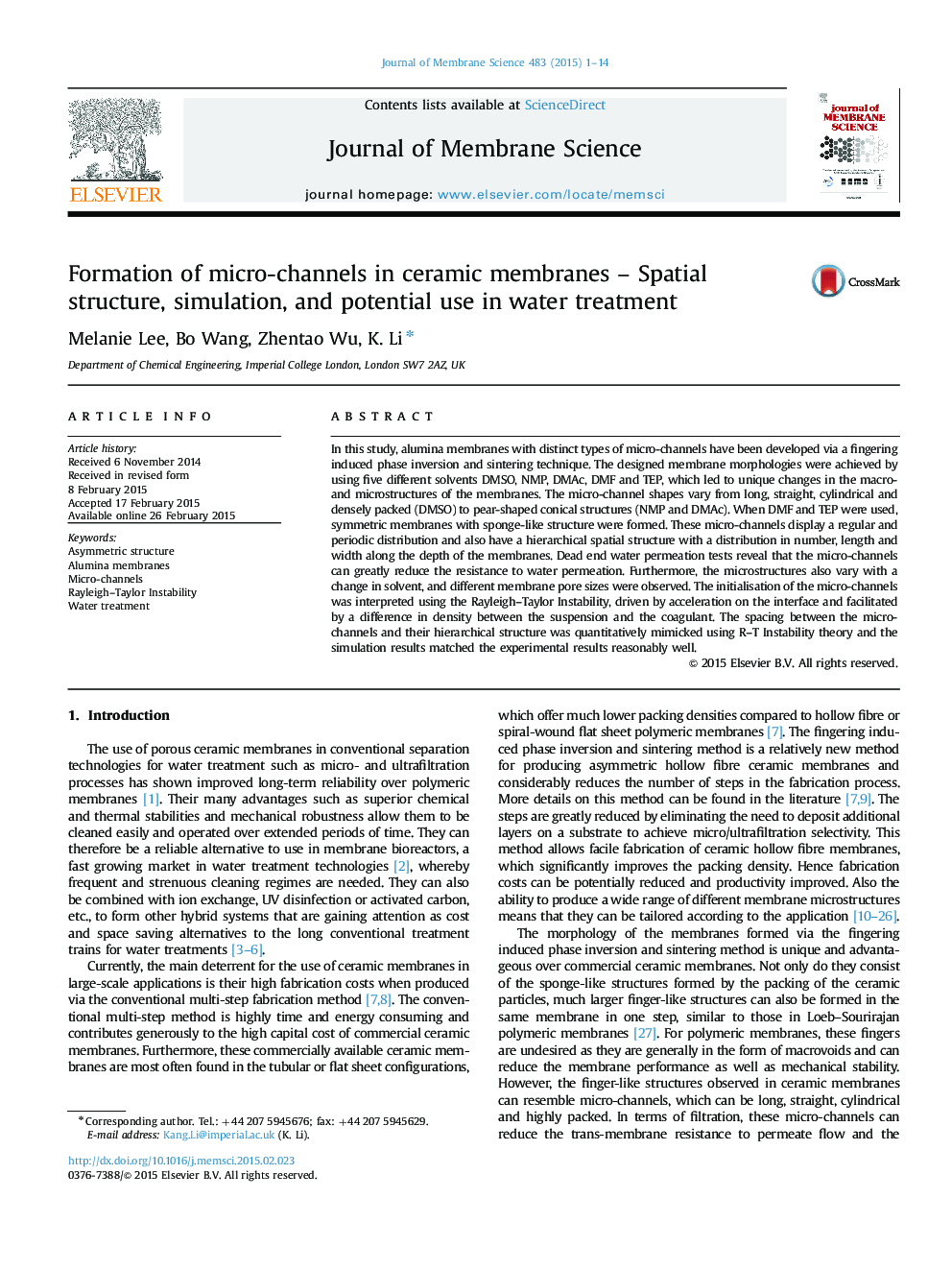| Article ID | Journal | Published Year | Pages | File Type |
|---|---|---|---|---|
| 633057 | Journal of Membrane Science | 2015 | 14 Pages |
Abstract
In this study, alumina membranes with distinct types of micro-channels have been developed via a fingering induced phase inversion and sintering technique. The designed membrane morphologies were achieved by using five different solvents DMSO, NMP, DMAc, DMF and TEP, which led to unique changes in the macro- and microstructures of the membranes. The micro-channel shapes vary from long, straight, cylindrical and densely packed (DMSO) to pear-shaped conical structures (NMP and DMAc). When DMF and TEP were used, symmetric membranes with sponge-like structure were formed. These micro-channels display a regular and periodic distribution and also have a hierarchical spatial structure with a distribution in number, length and width along the depth of the membranes. Dead end water permeation tests reveal that the micro-channels can greatly reduce the resistance to water permeation. Furthermore, the microstructures also vary with a change in solvent, and different membrane pore sizes were observed. The initialisation of the micro-channels was interpreted using the Rayleigh-Taylor Instability, driven by acceleration on the interface and facilitated by a difference in density between the suspension and the coagulant. The spacing between the micro-channels and their hierarchical structure was quantitatively mimicked using R-T Instability theory and the simulation results matched the experimental results reasonably well.
Keywords
Related Topics
Physical Sciences and Engineering
Chemical Engineering
Filtration and Separation
Authors
Melanie Lee, Bo Wang, Zhentao Wu, K. Li,
